Instead of election night in November 2020 we may have to prepare for election week, or even election month. That’s because it is likely that we will not know the results of the 2020 election on election night in November—there will be more absentee ballots than ever before and it will take longer to count them.
The trend toward mail ballots was happening before the pandemic. Had the pandemic never happened, it is safe to estimate given past trends that mail-in ballots would have constituted nearly 30% of all ballots cast. With the pandemic however, and the rapid changes taking place in every state in order to make it easier to vote by mail, a cautious estimate is that at least half if not more of all ballots cast in November will be by mail or via early voting.
The following table lists the states that have held presidential primaries this year and the percentage of ballots cast absentee. It includes absentee ballots as a percentage of overall ballots in the more than 20 states that have had primaries in 2020 and for which absentee ballot numbers are available. It excludes another eleven states that used what is called a universal mail ballot, where there are very few or no in-person polling places and ballots are sent to all registered voters and returned mostly by mail.[1]
| Date of presidential primary | State | Percentage absentee ballots of total ballots cast |
| 2/11/20 | New Hampshire | 5.87% |
| 2/22/20 | South Carolina* | 3.16% |
| 3/3/20 | Arkansas | 3.62% |
| 3/3/20 | California** | 72.08% |
| 3/3/20 | Minnesota | 16.46% |
| 3/3/20 | North Carolina | 1.21% |
| 3/3/20 | Oklahoma | 3.79% |
| 3/3/20 | Texas | 5.31% |
| 3/3/20 | Vermont | 15.55% |
| 3/3/20 | Virginia* | 4.6% |
| 3/10/20 | Idaho | 12.64% |
| 3/17/20 | Florida | 46.47% |
| 4/7/20 | Wisconsin | 73.2% |
| 5/12/20 | Nebraska | 6.46% |
| 6/2/20 | District of Columbia | 71.11% |
| 6/2/20 | Indiana | 50.85% |
| 6/2/20 | New Mexico | 62.09% |
| 6/2/20 | Rhode Island | 82.98% |
| 6/2/20 | South Dakota | 58.12% |
| 6/9/20 | Georgia | 47.42% |
| 7/7/20 | Delaware | 44.82% |
| 7/11/20 | Louisiana | 21.02% |
* Indicates a Democratic party primary only.
** California adopted universal vote-by-mail on a county-by-county basis for the 2020 primaries.
The states in the above table are arranged in the order in which they occurred. As is evident from a quick glance at the table, those states with presidential primary contests in February and early March had relatively low levels of absentee voting. The exception there is California, which under a statute passed in 2016 was transitioning to a universal mail-in ballot state.
Absentee ballot use increased as the virus spread and quarantines became more common. By March 23 nine states were under quarantine orders, and by March 30 thirty states were under quarantine orders. The average number of absentee ballots cast jumps from an average of 13% before March 17—the date of two big primary contests, one in Illinois and one in Florida—to 51% in the months afterwards.
With more than half of all ballots in November being cast absentee (and even more than that if you count in the all-mail states), the traditional methods of calling the election at 11:00 PM on election night will simply not work.
How exit pollsters are adapting to changes in voting
For many years now, the major media outlets have raced to be the first to call a state and to declare a winner in the race for president. They used three major instruments—results from exit polls, sample precincts and models based on actual results. When exit polls show a clear and statistically significant advantage for one candidate or the other, the networks have been able to call the state as soon as the polls close. Given that there are deep red (Republican) and deep blue (Democratic) states, many states are called right away.
But already this year is different. As the 2020 primaries began, Edison Research, the company that has provided exit poll data to the big networks since 2003, conducted exit polls in the early primary states. And then, “On March 12, all hell broke loose and we couldn’t put people in the field.” That’s according to Joe Lenski, Executive Vice President and co-founder of Edison Research. “What we did starting in May and June,” says Lenski, “was to see if people would still be willing to participate in Election Day exit polling—we provided masks, gloves, and sanitizers and put the survey on tables so voters could pick it up. And we found with those precautions we got the same response rates we normally do. The people responded. That was reassuring.”
So there will be exit polling in November as well as more interviewing at early voting centers. However, the exit polls may not be as useful as they have been. As Lenski points out, “The main difference for us in November will be dealing with the large number of mail-in ballots.” This means that the researchers will need to telephone absentee ballot voters and hope they are willing to share who they voted for. In some states this will be easy since the state makes voter rolls available in real time. In other states they provide the list of absentee voters from the last election. “We’ll use,” says Lenski, “whatever information we can get…”
In the seven states that currently mail ballots to all voters, Edison Research can simply conduct a poll of all registered voters on Election Day and get a sense of who is winning. Of those states five are likely to vote Democratic (California, Washington, Oregon, Hawaii and the District of Columbia), one is likely to vote Republican (Utah), and one is arguably a swing state (Colorado). So while we may know the outcome of the election in these states on election night, they are not likely to tell us much about the overall election—unless Utah goes Democratic.
We may see in-person and absentee voters diverge as distinct groups
In the states where citizens will vote by mail and by absentee ballot, which as of this moment includes nearly all the swing states, predicting the outcome will be more difficult—especially if the in-person voters are different from the absentee voters. President Trump is contributing to this likelihood by waging a non-stop Twitter war against mail-in ballots. Only recently has he distinguished universal mail-in ballot systems from absentee ballot systems—which he has deemed “good.” But this distinction may be lost on his voters. In typical Trumpian fashion it looks like he is working hard to create an excuse for why he lost, months before the election. But, as noted above, most of the universal mail-in ballot states are Democratic states. Is anyone really going to believe that Trump would have won California if they didn’t have mail-in ballots?
As this goes on, Republican party officials and office holders are getting very nervous about the fact that Trump’s war on mail ballots is likely to cost Republican office-holders down the ballot.
Some preliminary evidence points to the fact that the Election Day vote may be a Republican vote and the absentee vote a Democratic vote.
Take, for instance, the recent case of the special election in New York’s 27th Congressional District. In this special election, held to fill the seat vacated by Chris Collins (who resigned after a scandal that sent him to jail), the ballots cast on election night for Republican Christopher Jacobs showed him with a commanding lead over the Democrat, Nate McMurray. This was not surprising given that this congressional district in upstate New York is the most Republican district in a Democratic state. What was surprising about the votes—which took a while to come in—was how lopsided they were depending on how the voter voted. The in-person voters showed a large margin, 31 percentage points to be exact, for the Republican,but when the absentee ballots were counted the Republican candidate’s margin shrank to 11.3 percent.
A similar story can be told about a recent ballot initiative in Oklahoma to see if voters wanted to expand their state’s Medicaid program. Those voting by mail broke overwhelmingly in favor of expansion, as did those voting early. Voters who voted on Election Day voted against expansion. In the end the initiative to expand Medicaid won with just over 50% of the vote. “Needless to say,” says Lenski, “we have rarely seen differences this big before between the by-mail vote and the in-person Election Day vote.”
If anything, the tendency of Republicans to vote on Election Day and Democrats to vote absentee is getting stronger. For instance, a new Emerson College poll “…finds that 58% of voters plan to vote in person, while 43% expect to vote by mail. Of those who plan to vote in person, Trump leads 65-32. Biden leads with those who intend to vote by mail, 76-20. The depth of this partisan divide is striking.”
And a new Axios-Ipsos Coronavirus Index survey finds:
- 52% of Americans see in-person voting as a risk to their health and well-being.
- “64% of Democrats, 59% of independents and 29% of Republicans see in-person voting as very or somewhat risky.”
- “More women than men see it as risky, 57% to 47%.”
- “65% of Hispanics, 63% of Blacks and 45% of Whites see it as risky.”
Rushing to call the election will damage its integrity
If differences between in-person and absentee results persist and if the networks rush to judgement on election night, they will play right into the hands of conspiracy theorists who will argue that the election was rigged and corrupt. This is why, right now, it is the civic duty of network news executives to keep from rushing to judgement on election night and to explain to the public that it will take longer to count the votes than usual. The facts are simple. In some states absentee ballots must be received before Election Day, meaning that they can be counted in a more timely manner. But there are now 20 states that count ballots received after Election Day, as long as they are post marked by Election Day. So even if the networks are able to sample absentee ballots, there are likely to be millions of people who vote their absentee ballot on Election Day itself and put it in the mail. Once everyone understands that we may not know the winner on election night and why, we can hope for election results that are less susceptible to conspiracy theories.
Contrary to speculation, we will have an election on November 3, 2020. States have all had dry runs with the 2020 primaries and are incorporating the lessons learned into their plans for November. There will be glitches and honest mistakes—like the one in Somerset County, New Jersey where some Republican voters got what was labeled a Republican primary ballot but which contained the names of Democratic candidates beginning with Joe Biden.
But the media should not exacerbate the problem by rushing to judgement on election night. Let all the ballots be counted—even if we have to live with election week or election month.
Abigail Mason contributed to the research for this post.
[1] Alaska, Colorado, Hawaii, Kansas, Maryland, Montana, Ohio, Oregon, Utah, Washington, Wyoming
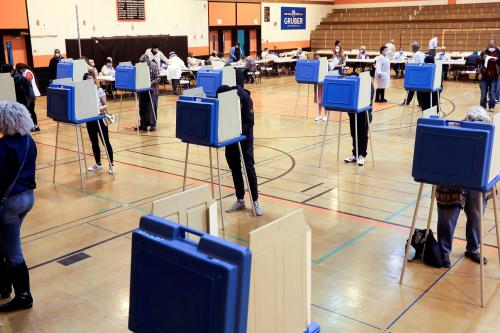
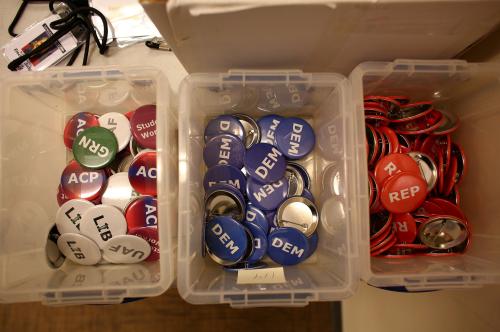
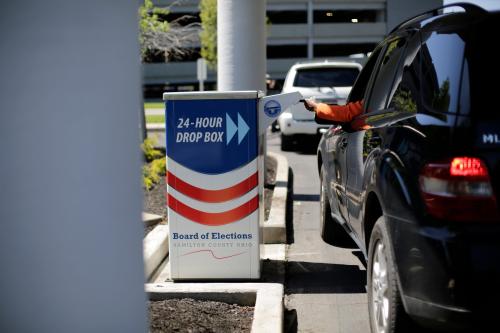

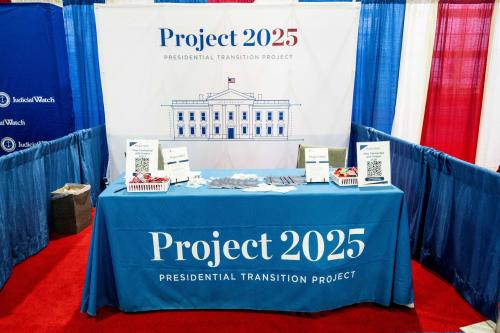
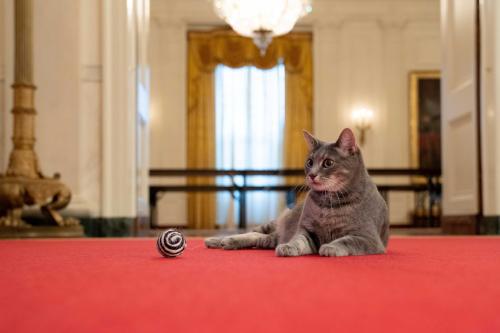

Commentary
Election night? Think again—election month might be more like it
August 4, 2020